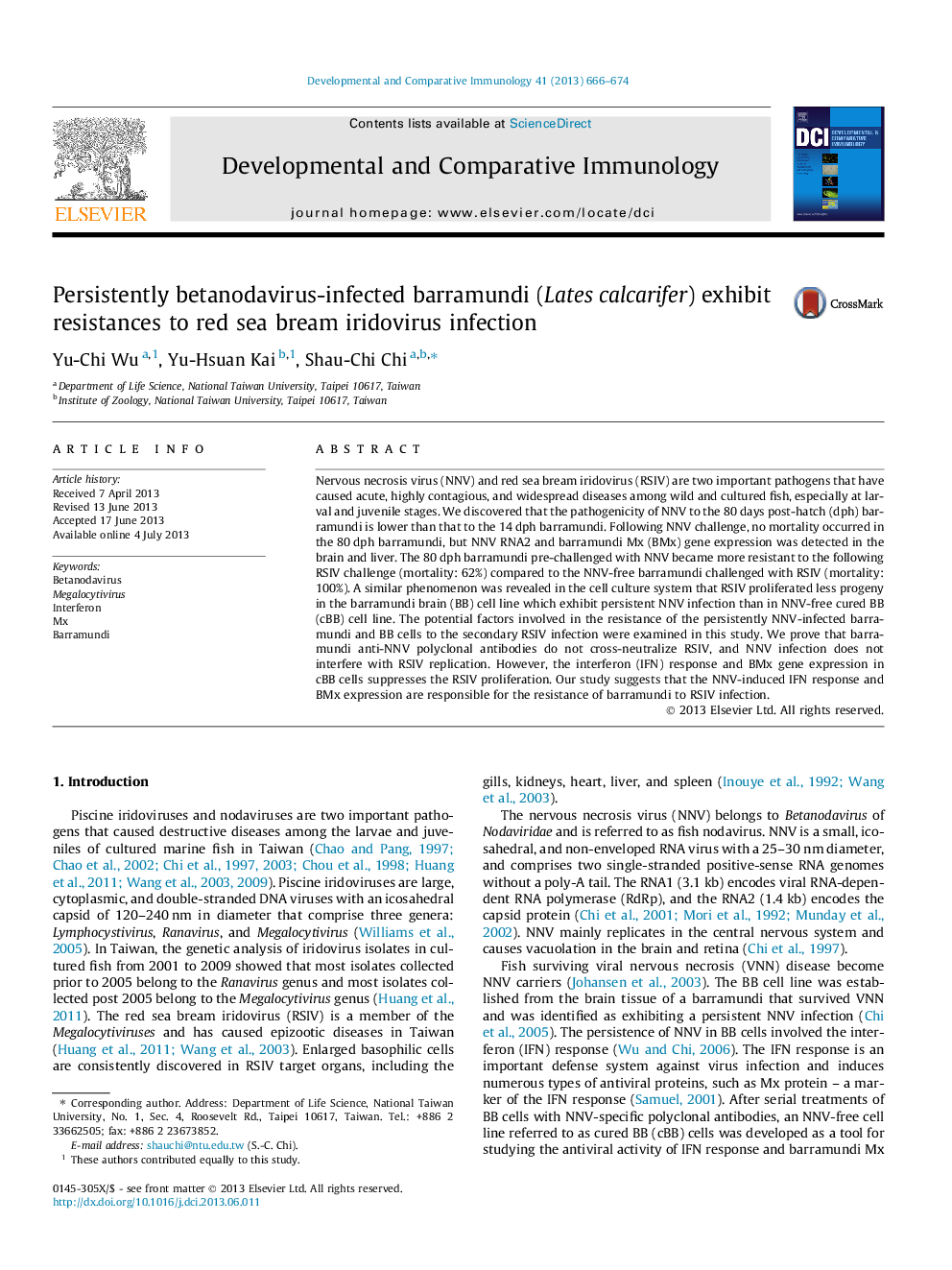| Article ID | Journal | Published Year | Pages | File Type |
|---|---|---|---|---|
| 10971616 | Developmental & Comparative Immunology | 2013 | 9 Pages |
Abstract
Nervous necrosis virus (NNV) and red sea bream iridovirus (RSIV) are two important pathogens that have caused acute, highly contagious, and widespread diseases among wild and cultured fish, especially at larval and juvenile stages. We discovered that the pathogenicity of NNV to the 80Â days post-hatch (dph) barramundi is lower than that to the 14Â dph barramundi. Following NNV challenge, no mortality occurred in the 80Â dph barramundi, but NNV RNA2 and barramundi Mx (BMx) gene expression was detected in the brain and liver. The 80Â dph barramundi pre-challenged with NNV became more resistant to the following RSIV challenge (mortality: 62%) compared to the NNV-free barramundi challenged with RSIV (mortality: 100%). A similar phenomenon was revealed in the cell culture system that RSIV proliferated less progeny in the barramundi brain (BB) cell line which exhibit persistent NNV infection than in NNV-free cured BB (cBB) cell line. The potential factors involved in the resistance of the persistently NNV-infected barramundi and BB cells to the secondary RSIV infection were examined in this study. We prove that barramundi anti-NNV polyclonal antibodies do not cross-neutralize RSIV, and NNV infection does not interfere with RSIV replication. However, the interferon (IFN) response and BMx gene expression in cBB cells suppresses the RSIV proliferation. Our study suggests that the NNV-induced IFN response and BMx expression are responsible for the resistance of barramundi to RSIV infection.
Related Topics
Life Sciences
Biochemistry, Genetics and Molecular Biology
Developmental Biology
Authors
Yu-Chi Wu, Yu-Hsuan Kai, Shau-Chi Chi,
